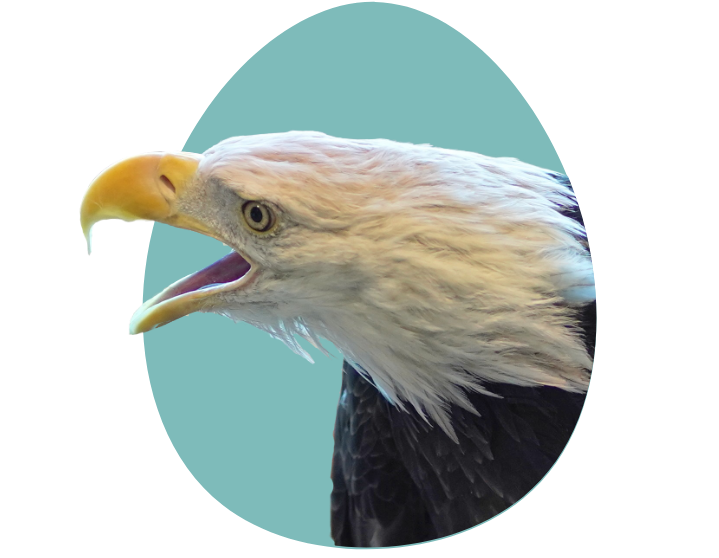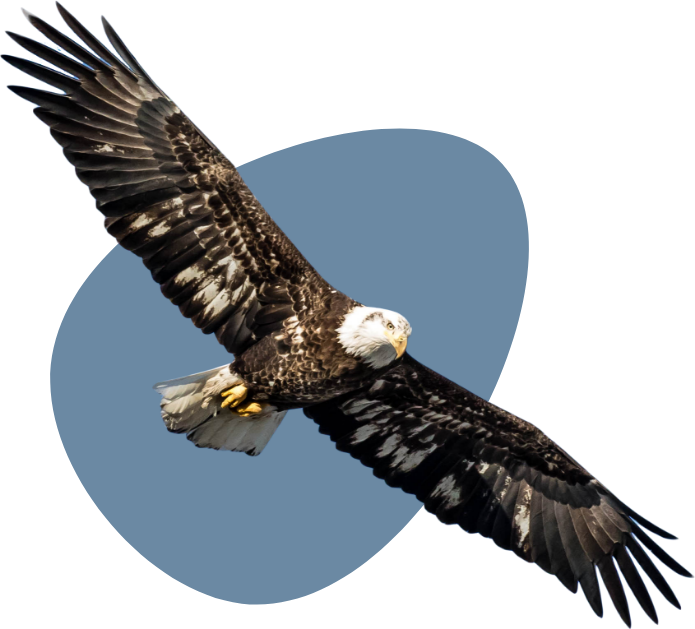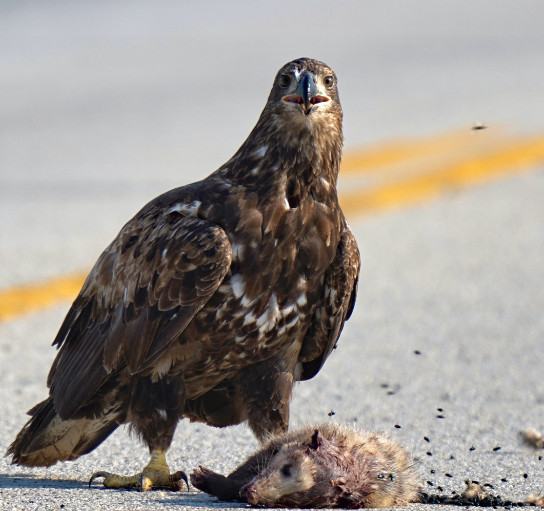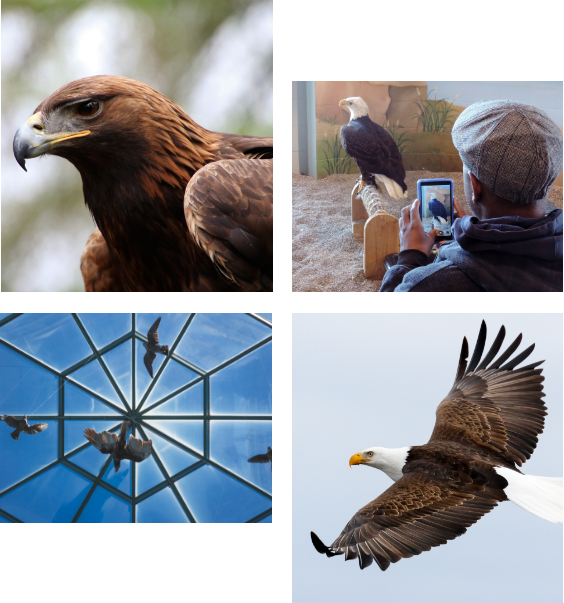Current Threats to Eagles
With no natural predators, the greatest threats to wild eagle populations are human-made. Learn about the current threats eagles face and how we can work to minimize the dangers.
Lead Poisoning Is the Biggest Threat to Eagles
If an eagle ingests even a tiny fragment of lead, powerful stomach acids will break down the lead and release it into the bloodstream.
The lead will then damage the nervous system and other organs, resulting in motor control problems and organ failure. Even a tiny amount of lead can be lethal for an eagle within days.
Often the cause of lead poisoning is hunters will leave gut piles in the woods, to lighten the carcass they are carrying back, and typically feel as though they are doing a good deed by leaving the guts for animals to eat. Unfortunately, if lead ammunition is used it will fragment into various parts of the body including the guts, and scavengers like eagles then ingest the lead and suffer from lead poisoning. This is also the case when fish swallow lead fishing tackle such as sinkers and the fish eaten by a Bald Eagle.
The Center Recommendation: Switch to lead-free fishing tackle and ammunition.


A Closer Look
Learn the devastating impact lead poisoning has on the overall eagle population.
Vehicles Can Collide With Eagles
As scavengers, eagles often feed on roadkill which makes them vulnerable to passing motorists. When a vehicle approaches, it appears as a challenger to eagles who assume it wants their food.
Eagles will stand their ground and work to intimidate the approaching vehicle before realizing it is not backing down. At the last second, eagles will abandon their prey and attempt to fly away, which can often be too late.
The Center Recommendation: Remove roadkill from the sides of roads.


A Closer Look
Learn about the legal protections allotted to eagles and how they support eagle conservation.
Any eagle deaths (or harms) in excess of the permitted number at that site would open the door to prosecution under federal law.
The permit requires that mitigation procedures to limit potential harm to eagles be put in place, as well as mandatory data collection and regulatory oversight of the project.
Wind Turbines Create a Dangerous Obstacle
A major cause of eagle collisions with turbines is that eagles in pursuit of prey can be struck by a blade.
While turbine-related deaths are not as common, it is still important to ensure that the area near turbines does not provide a regular food source for eagles and that regulatory agencies and the wind energy industry put in place mitigation efforts to reduce avian mortality.
The Center Recommendation: Increase lighting and reduce blade speed to curve collisions.

What are the Center’s positions on
Lead and Wind Energy?
Learn how lead can be detrimental to eagles and other wildlife, and how we are actively working to minimize the risks and raise awareness.
Learn how we are advocating for both clean energy and the positive impact wind turbines have on the environment, and the potential threat turbines pose for eagles.
